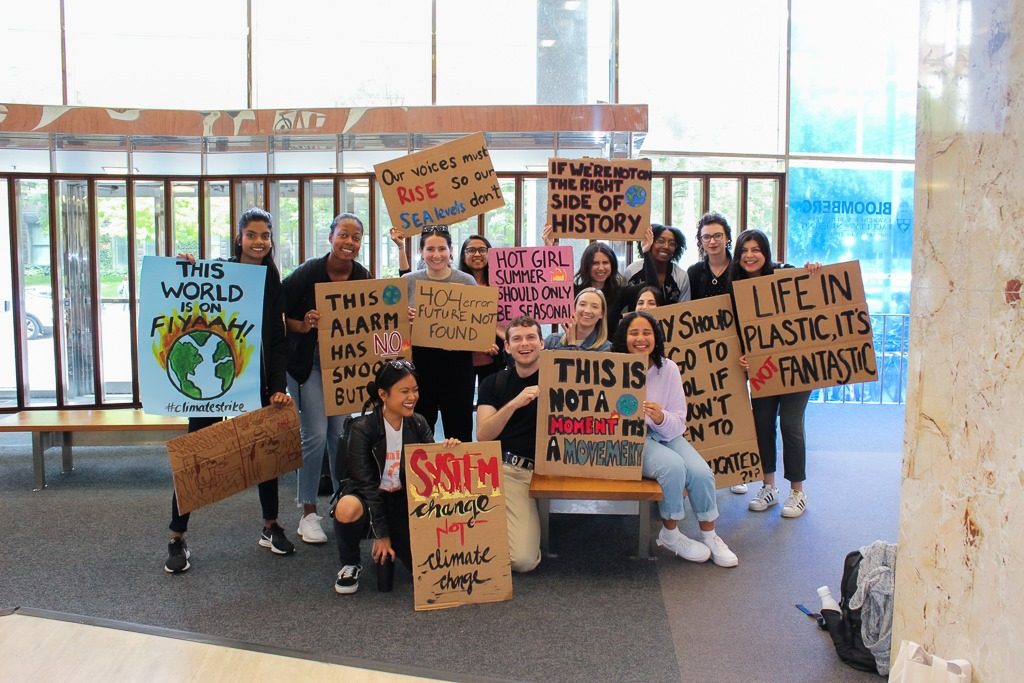For One Professor, The Climate Strike Was a Classroom
October 1/2019
Assistant Professor Jeffrey Brook didn’t just reschedule his weekly “Introduction to Public Health – Traffic Air Pollution Case Study” class on Friday, he held it at Queen’s Park, during the Global Climate Strike. MPH student Roshaneh Jaffer, a work-study communications assistant at DLSPH, spoke with the air pollution expert about the strike, the early days of environmentalism and whether there’s reason for optimism about our climate.
Why did you decide to host a class today at the protest?
At the start of my new appointment at DLSPH, I looked forward to more opportunity to engage with faculty and students. But, I wasn’t really sure how much students were thinking about climate change. In this first year I have learned they are very concerned and interested, giving me more desire to help students understand and to learn from their perspectives. It’s such a huge issue and there is a sense that we don’t really know what to do or where to begin. I don’t have the answers, but together it’s an opportunity for dialogue.

Student-led climate strike group getting ready for the march
What will you teach today?
Today’s class is to discuss the public health implications of climate change. In this air pollution case study group, where we are looking at solutions for traffic air pollution in Toronto to reduce public health impacts, having this discussion helps us realize that this problem can’t be isolated from climate change. The causes and the solutions are strongly connected.
What are you hoping your students will learn?
In addition to understanding more about why and how climate change is a major public health issue that will intersect with their future careers regardless of what aspect of public health they specialize in, I’m hoping that they’ll learn that they should be vocal, it can make a difference.
How have attitudes changed from your time in school and now?
Students who were studying the same thing I studied, Atmospheric Science (1986-91), were already concerned about climate change. In general, those who understood the science, whether it be climate science or ecology, for example, already knew it was an extremely critical issue, although its specific impacts and their timing were still being assessed. Many then dedicated their careers to resolving those questions. But among other students and the general public there was confusion. This was created by journalistic reporting that tended to present both sides relatively equally in many stories giving the false impression that science was unsettled. I think then that the average person tends to accept the view that we really don’t know so they personally don’t need to be concerned or change. Now the science is being reported more clearly, but the need and type of actions required has been twisted into a political/partisan issue so instead of confusion, we now have frustration which for some is boiling over to anxiety.
At University of Michigan when I was there, we celebrated the 20th anniversary of Earth Day and U of M had lots going on because it was one of the key places on the first Earth Day. Some of the main people who were outspoken back in 1970 came back to the University and gave mass lectures— people like Ralph Nader. Every day there were different big names and great speakers because University of Michigan’s Teach-In on the Environment was the prototype of the first Earth Day. I gave a teach-in on acid rain because that was my PhD topic. For weeks after, I experienced quite a bit of sadness brought on by all the bad news I heard in the lectures. So I totally get it when I hear now about the anxieties many of today’s youth are feeling. It’s real and obviously, it isn’t healthy. We can’t let this turn into fear and paralysis and big strikes like today provide an outlet and a sense of optimism. That’s a great thing!